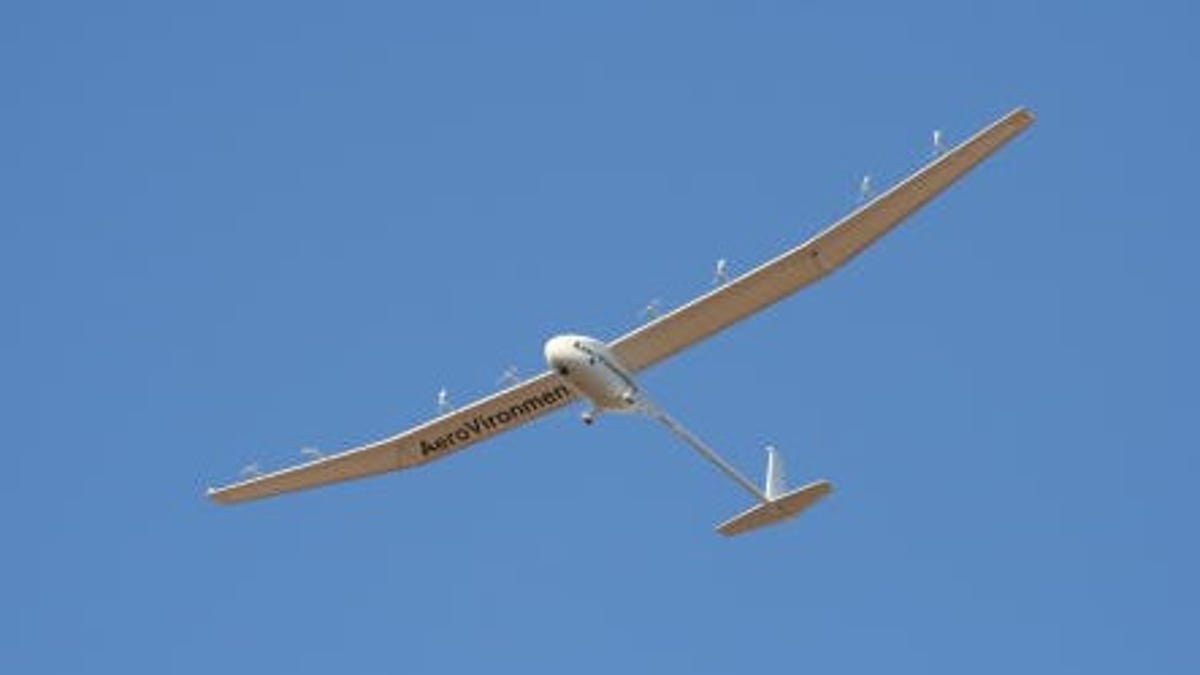Hydrogen to fuel long-distance drone for special ops
SOCOM has purchased a hydrogen-fueled robot plane capable of staying aloft at high altitudes for the better part of a week.

The U.S. Special Operations Command is going green with its purchase of a hydrogen-fueled robo-plane that can loiter in the stratosphere for up to five days at a time.
The high-altitude long endurance (HALE) Global Observer will cost $57 million for the first drone, with two more in the pipeline for an additional $108 million. The drone, or unmanned aircraft system (UAS), is powered by a hydrogen-fueled internal combustion engine designed and built by AeroVironment, which has already successfully tested a scaled down model during a five-day stretch in an altitude chamber above a simulated 65,000 feet.
The UAS's role will be to provide communications relay and remote sensing, including HDTV video and third-generation mobile voice, video and data using off-the-shelf technology, according to the manufacturer. The unit is expected to be deployed in two years, contingent on continued government funding.
The Global Observer, with its "persistent, global, stratospheric loitering capability" (PDF), will mean one more "eye in the sky" over Godforsakenstan, but applications are not limited to defense. Homeland security, storm tracking, weather monitoring, wildfire detection, mapping, environmental monitoring and crop management (got to keep an eye on those poppies) are some of the other potential applications.